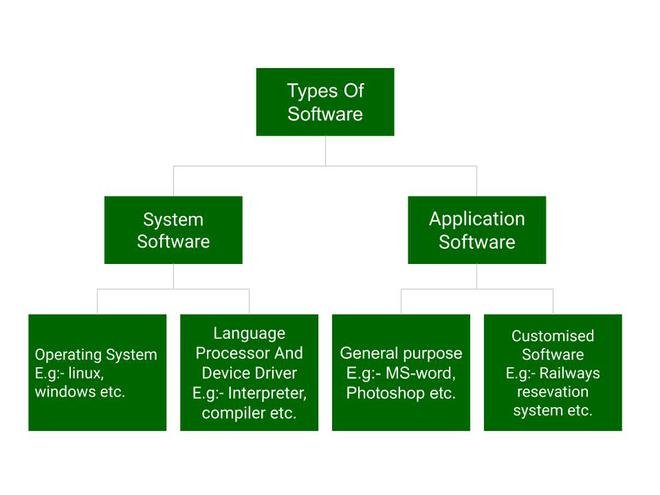
Software can be categorized into several different categories based on its purpose, functionality, and usage. Here are some of the main categories of software:
System Software:
- Operating Systems: These manage computer hardware and provide essential services and interfaces for running other software.
- Device Drivers: Drivers enable communication between hardware devices and the operating system.
- Utilities: Utility software includes tools for managing and optimizing system performance, such as disk cleanup, antivirus, and backup utilities.
Application Software:
- Productivity Software: Tools designed to help users create, edit, and manage documents, spreadsheets, presentations, and other office-related tasks. Examples include Microsoft Office, Google Workspace, and LibreOffice.
- Graphic Design Software: Software used for graphic design, image editing, and multimedia creation, such as Adobe Photoshop, Illustrator, and InDesign.
- Video and Audio Editing Software: These applications are used for editing and manipulating video and audio files, like Adobe Premiere Pro, Final Cut Pro, and Adobe Audition.
- Web Browsers: Programs like Google Chrome, Mozilla Firefox, and Microsoft Edge allow users to access and browse the internet.
- Email Clients: Email software like Microsoft Outlook, Mozilla Thunderbird, and Apple Mail for managing email communication.
- Gaming Software: Video games and game development tools fall under this category.
- Educational Software: Software designed for educational purposes, including interactive learning programs, simulations, and virtual classrooms.
- Entertainment Software: This category includes media players, streaming applications, and software for digital content consumption.
- Content Management Systems (CMS): Platforms like WordPress, Joomla, and Drupal are used to create and manage websites and blogs.
- Database Software: Programs like MySQL, Oracle, and Microsoft SQL Server manage and manipulate databases.
- Accounting Software: Financial software used for bookkeeping, budgeting, and financial management, such as QuickBooks and Intuit.
- Project Management Software: Tools for planning, tracking, and managing projects, like Microsoft Project, Asana, and Trello.
- Communication Software: Applications for communication purposes, including instant messaging, video conferencing, and collaboration tools like Slack, Zoom, and Microsoft Teams.
Middleware:
- Middleware: Software that acts as an intermediary between different applications or components, often used in networked and distributed systems to facilitate communication and data exchange.
Utility Software:
- Security Software: Programs like antivirus, anti-malware, and firewall software designed to protect systems from threats and vulnerabilities.
- Backup and Recovery Software: Tools for creating backups of data and systems to prevent data loss and enable recovery in case of system failures.
- Compression Software: Software used to compress and decompress files and data to save storage space and facilitate file transfers.
- Disk and File Management Utilities: Utilities for managing and optimizing disk space, file organization, and data storage.
- System Maintenance and Optimization Tools: Tools for maintaining and optimizing system performance, including disk defragmentation and registry cleaners.
Embedded Systems Software:
- Software that is embedded within hardware devices, such as firmware in smartphones, IoT devices, and automotive control systems.
Enterprise Software:
- Software designed for large organizations and businesses to manage various aspects of their operations, including Enterprise Resource Planning (ERP) systems, Customer Relationship Management (CRM) software, and Human Resources Management Systems (HRMS).
Open Source Software:
- Software for which the source code is freely available and can be modified and distributed by anyone. Examples include the Linux operating system and the Apache web server.
Proprietary Software:
- Commercial software that is owned and distributed by a specific company, often requiring a license or subscription for use. Examples include Microsoft Windows and Adobe Creative Suite.
Freeware and Shareware:
- Freeware is software that is distributed for free, and users can use it without payment. Shareware is software that is initially free but may require payment for full functionality or continued use.
These categories provide a broad overview of the types of software available, but there are many more specialized software applications and categories that cater to specific needs and industries.
